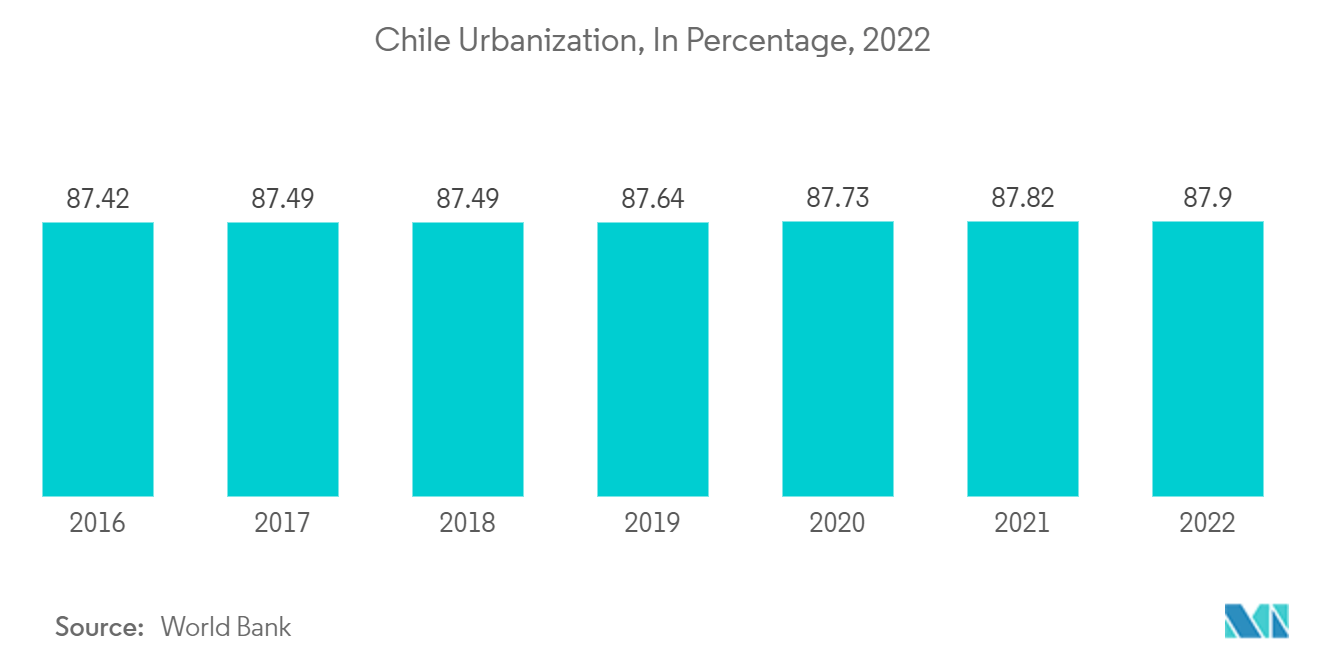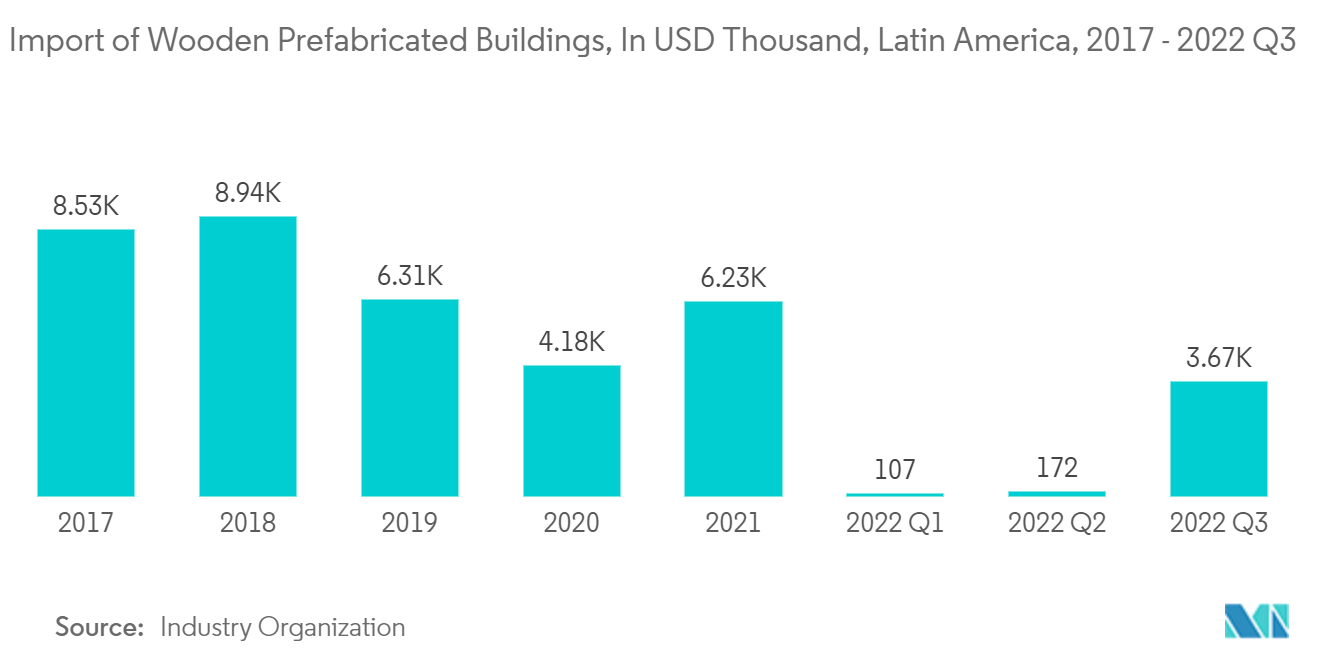Market Trends of Latin America Prefab Wood Buildings Industry
This section covers the major market trends shaping the Latin America Prefab Wood Buildings Market according to our research experts:
Increase of Urbanization in Chile Driving the Market
Chile has been one of Latin America's fastest-growing economies in recent decades. Chile is experiencing growing urbanization. Some 90 percent of Chileans live in cities. Urbanization and the evolution of modern cities have led to the development of high-rise building constructions. Traditionally designed with concrete as the main structural material, their construction implies an increase in CO2 emissions released into the atmosphere, air pollution, and a rise in energy and water consumption. These consequences call for the development of new sustainable strategies outside of the industry's comfort zone, such as the incorporation of wood as a structural element.
During the last few years, the merging of timber building tradition with the application of new technologies has produced new prefabricated building systems. The current challenges in the present era in terms of sustainability have been addressed by architecture and construction. Aware of this need, Chile country has already been a tendency for some years to carry out projects that consider wood as the main material, as it is a renewable resource, low in emissions, and gradually allows the replacement of alternatives derived from natural resources.
Chile has shown sustained growth of buildings construction during the past decades but little further development in the use of wood. The Tamango Project by Tallwood architects is an example of the challenges and opportunities of wood construction in the country and the region, as it might potentially be the first 12-storey building with an engineered timber structure.

Demand of Prefabricated Buildings
Since 2020, the needs of new buyers have been evolving hand in hand with the real estate sector, before the decision to choose a home. To meet these new needs, modular homes have hit the market. Due to its benefits such as simplicity, ease of installation on any terrain, lower environmental impact, customization and costs up to 30% less compared to traditional houses, now they can be found on internet sites, more and more. Prefabricated houses in Mexico have gained popularity as they offer great advantages. Prefabricated wooden houses in Mexico are in fashion, due to their cheaper prices and speed of construction. Industrially prefabricated wood has come to stand out in recent years as one of the most used materials for housing construction.
Prefabricated houses have gained prominence worldwide over the years. A triggering factor was the pandemic, as well as the increase in traditional housing costs of raw materials and the rise of minimalist trends. Currently, they are one of the main alternatives in conventional constructions and more and more people are choosing this type of modular housing.
It has been noted that there is room for more prefabricated homes to be built in order to meet the demand and supply for houses in the region. As Latin America's biggest city, Sao Paulo has failed for decades to solve its severe housing crisis. More than 1.2 million people are in need of adequate housing. Currently, 1.2 million families have no place to call home. And with only 240,000 new housing units available each year, the housing shortage will be an ongoing issue in Colombia for years to come. Constructora Bolivar plans to introduce modular construction to the Colombian property owners and developers of multi-family buildings. The belief is that, as they become aware of the lower construction and maintenance costs, and the higher return on investment (ROI), modular construction will establish a foothold.


